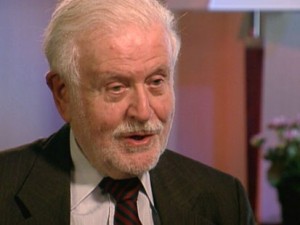 Those of you who follow our efforts to bring some balance to offset global warming alarmism also likely know of our honorary godfather, Fred Singer. Fred has been a tireless crusader, including helping to establish the NIPCC as an answer to the U.N.ís IPCC.
Those of you who follow our efforts to bring some balance to offset global warming alarmism also likely know of our honorary godfather, Fred Singer. Fred has been a tireless crusader, including helping to establish the NIPCC as an answer to the U.N.ís IPCC.
But people like Fred (and myself) didnít start out in global warming, which is a relatively modern invention. For example, my original claim to fame was developing methods for measuring global precipitation from satellite-borne microwave radiometers, starting in the early 1980s. Fred started out well before me in satellite remote sensing, serving as the first director of the National Weather Satellite Service during 1962-64. I was still in elementary school at that time.
Now, as my 60th birthday approaches in December, I find myself going through my old files and throwing away everything except items of historical interest. Yesterday, I hit upon a stack of old microwave rainfall retrieval papers, and I stumbled upon one I had totally forgot about.
It turns out that Fred Singer wrote one of the very first papers on the possibility of measuring precipitation from satellites with microwave radiometers. The original idea was put forth in brief qualitative terms in a German article authored by Konrad Buettner in 1963. Then, in 1968, Fred and co-author G. F. Williams, Jr., put some theoretical equations and aircraft test flights behind the idea. The article was Microwave Detection of Precipitation over the Surface of the Ocean, in the May 1968 issue of Journal of Geophysical Research.
As an expert in this field, I can tell you that Fredís treatment of the issue was surprisingly sound and insightful for such an early piece of work. It postulated effects which we now have widespread support for from satellite measurements.
I just wanted to bring attention to his early pioneering work in satellite microwave remote sensing, which eventually led to a wide variety of passive microwave imagers flying in space: ESMR, SMMR, SSM/I, TRMM, SSMIS, AMSR, GMI, and others. I’m sure there are other satellite areas he also helped to pioneer, too.
Great work, Fred!

 Home/Blog
Home/Blog



